Abstract
Electromyographic activity from the jaw-adductor muscles was recorded during mastication and bone crushing in domestic dogs (Canis familiaris). During mastication, balancing-side temporalis electromyographic activity was much less than that of the working side while masseter muscle electromyographic activities were of similar amplitude. Despite the large bite forces that were produced during bone crushing, balancing-side masseter and temporalis electromyographic activities were always smaller than the working-side electromyographic amplitudes. Based upon geometric modelling, it is proposed that balancing-side muscle activity is reduced because of its tendency to produce mechanically disadvantageous jaw-joint forces. This hypothesis was tested by correlating bone strain adjacent to the jaw joint measured during manipulations of the mandibular condyle with bone strain recorded during the simulation and stimulation of jaw-adductor muscle activity. Working-side muscle activity produced bone strain that correlated with a compressive joint loading, while balancing-side muscle activity, with an occlusal fulcrum at the carnassial teeth, produced bone strain indicative of an anteroventral movement of the working-side mandibular condyle which eventually ruptured the joint capsule. When the temporalis and masseter muscles were stimulated bilaterally with a carnassial bite point, bone strain indicative of a ventrally directed and potentially damaging condylar movement was produced. It is proposed that working-side muscle activity exceeds balancing-side muscle activity during carnassial biting to maintain jaw-joint stability.
Full text
PDF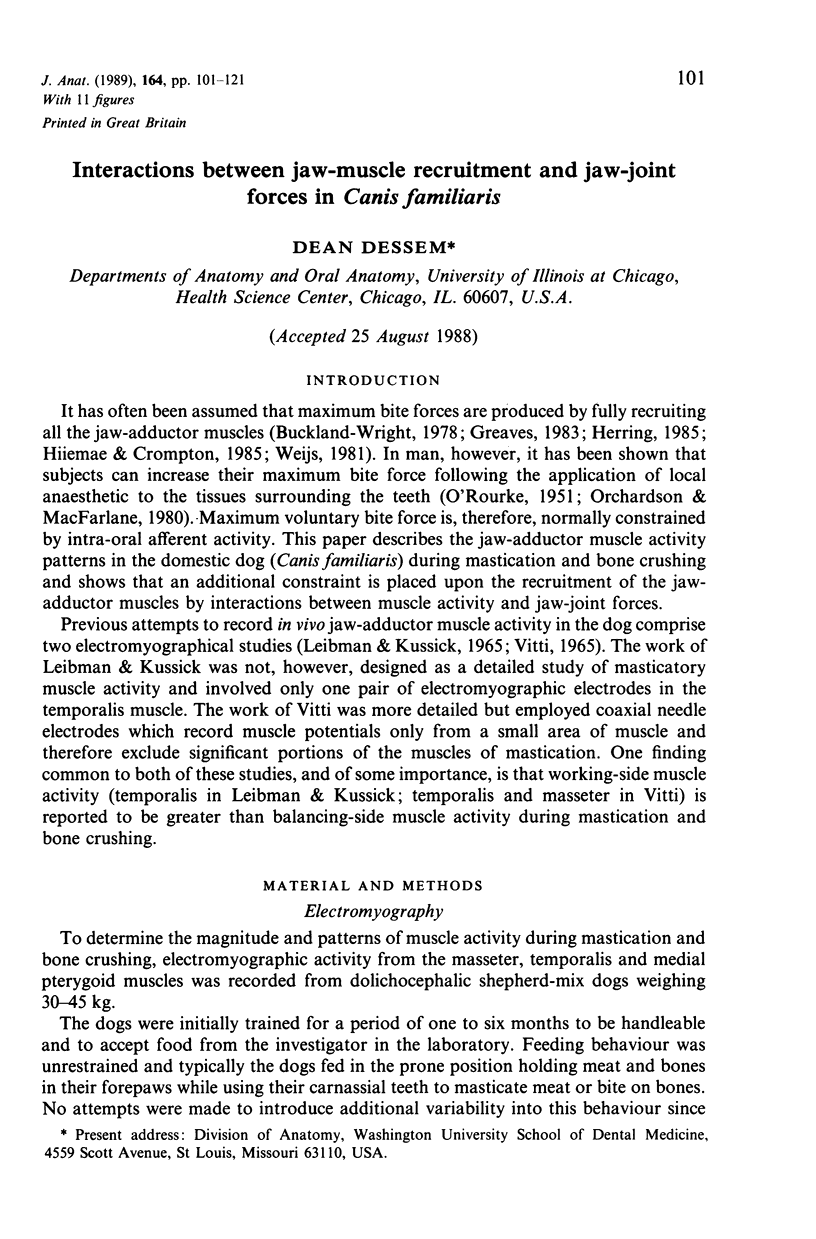
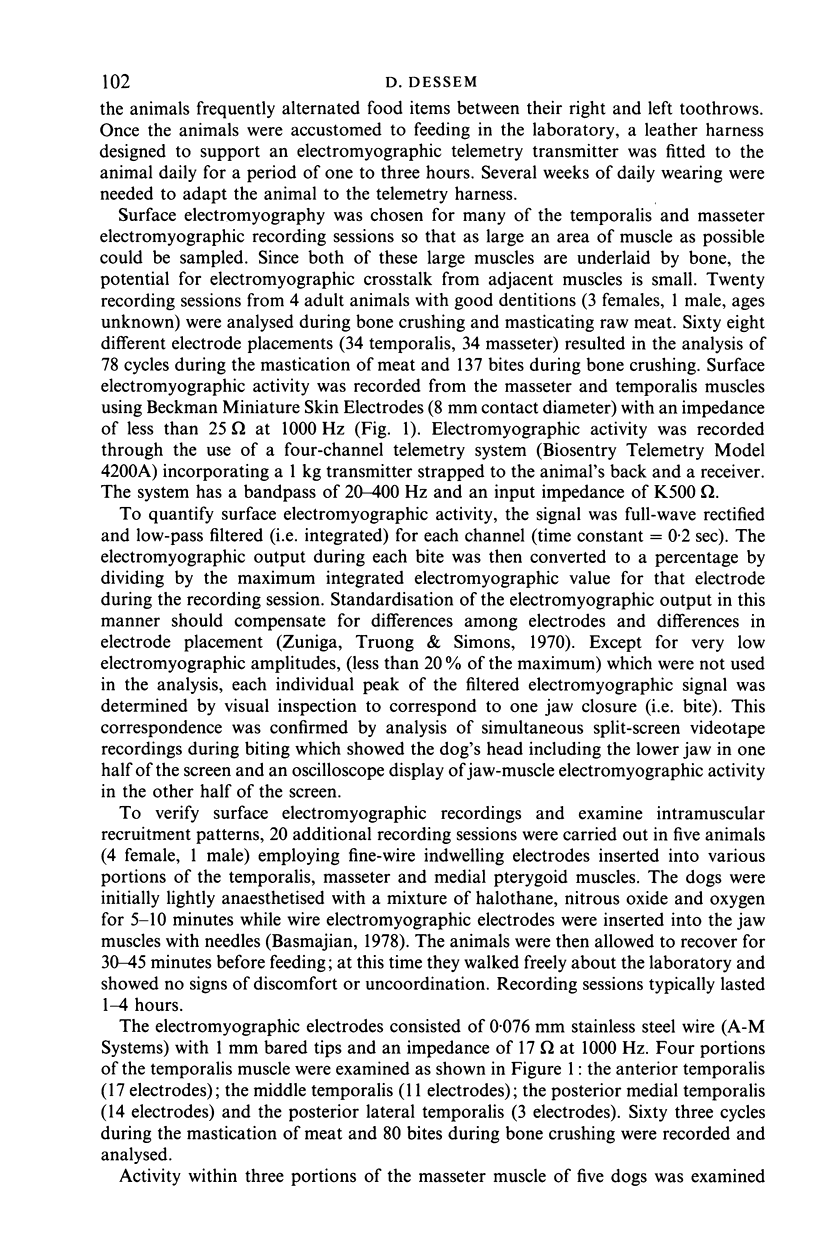
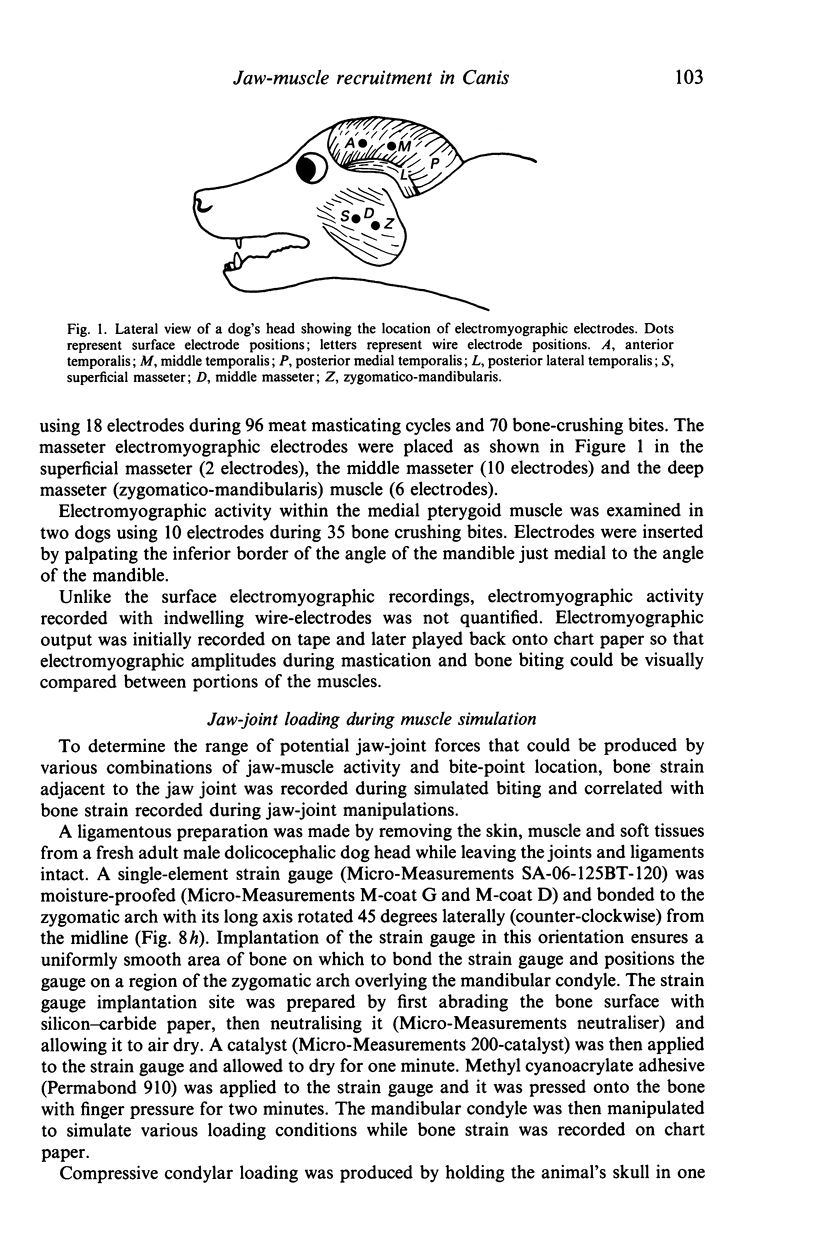
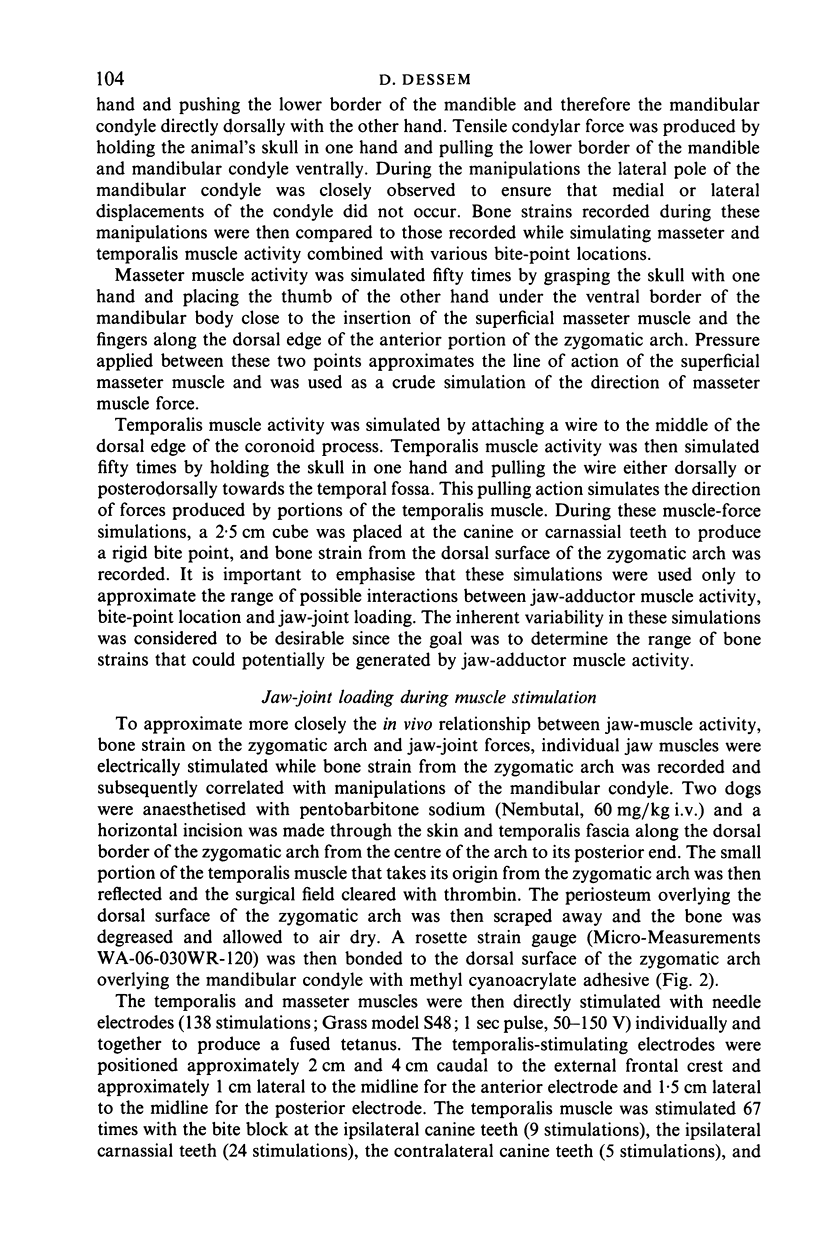
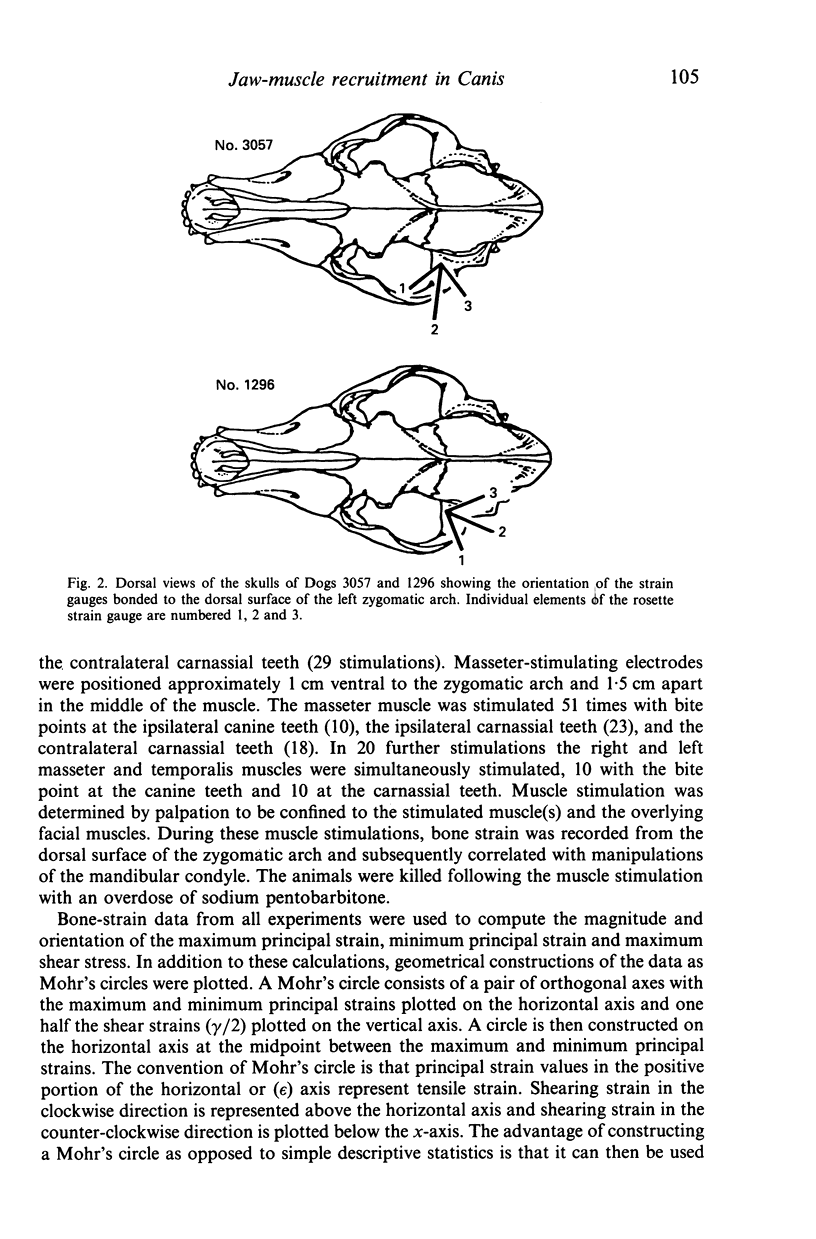
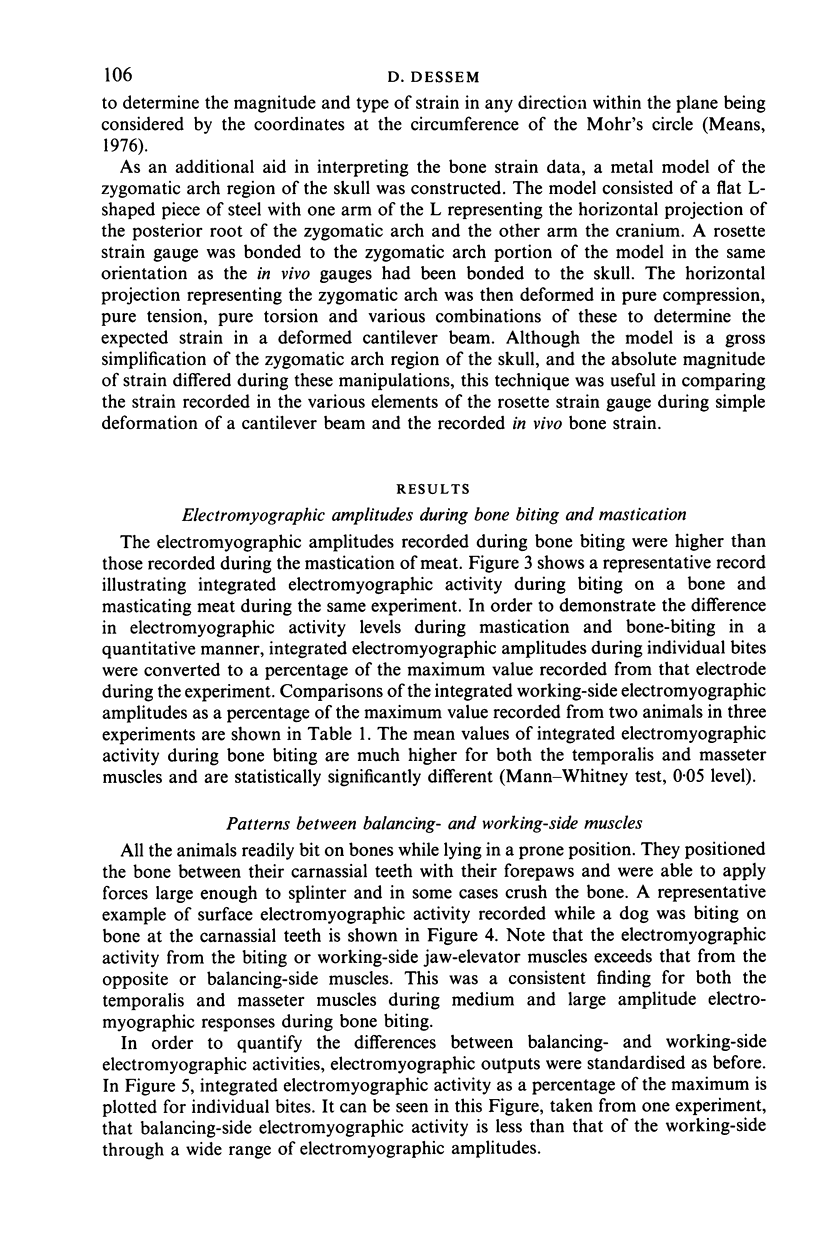
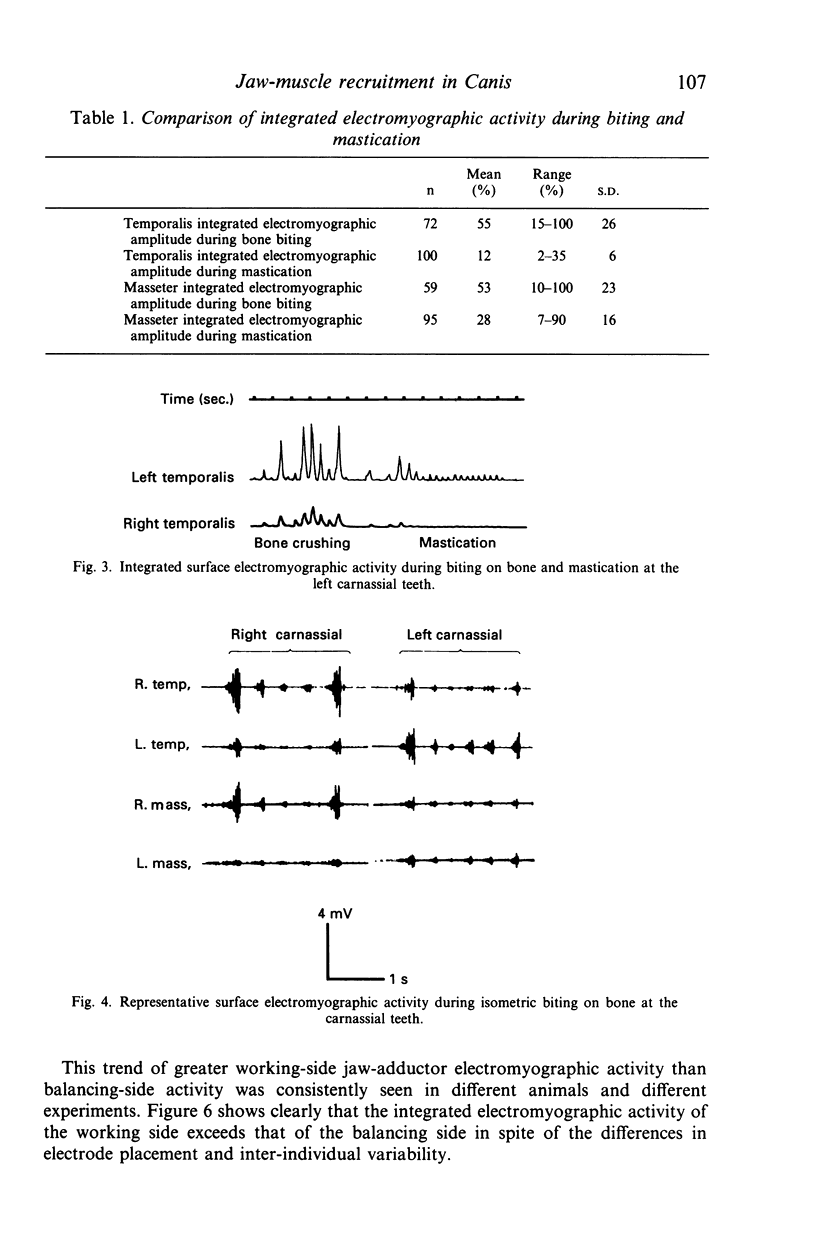
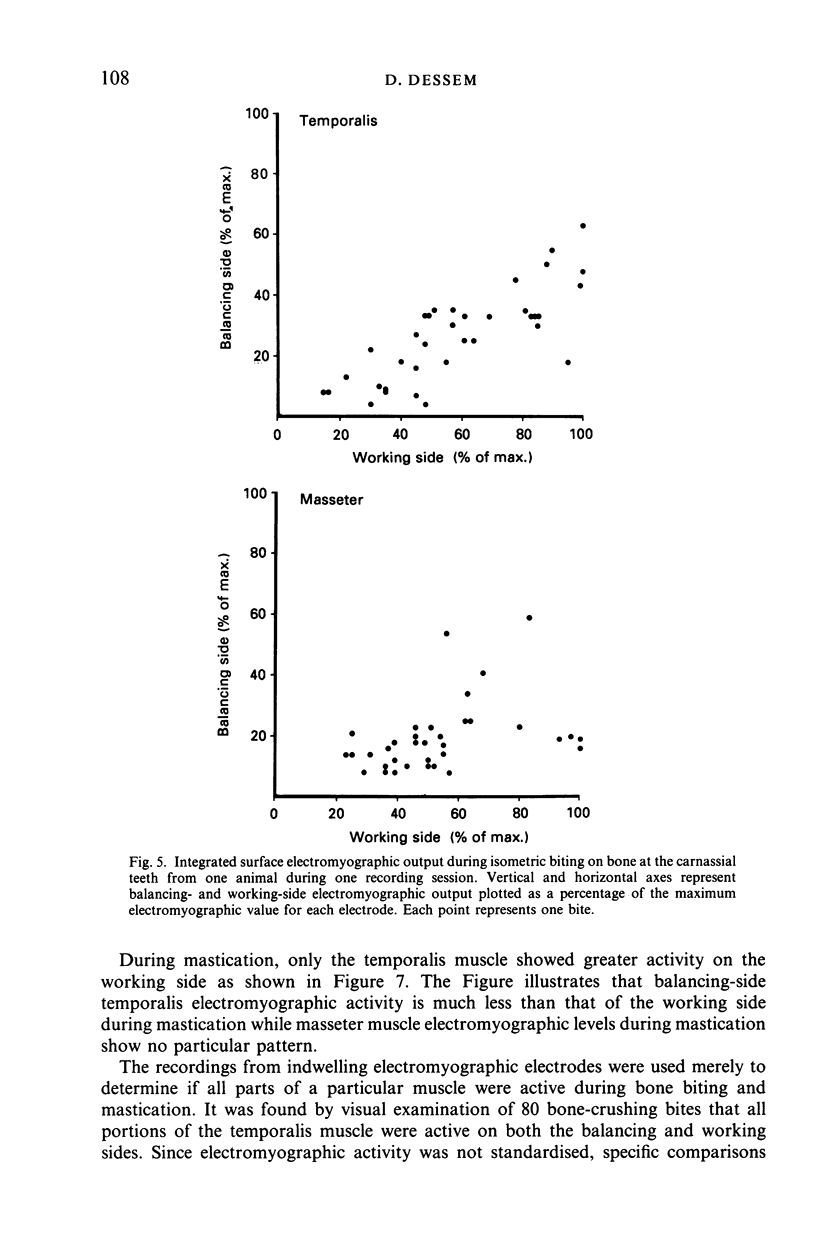
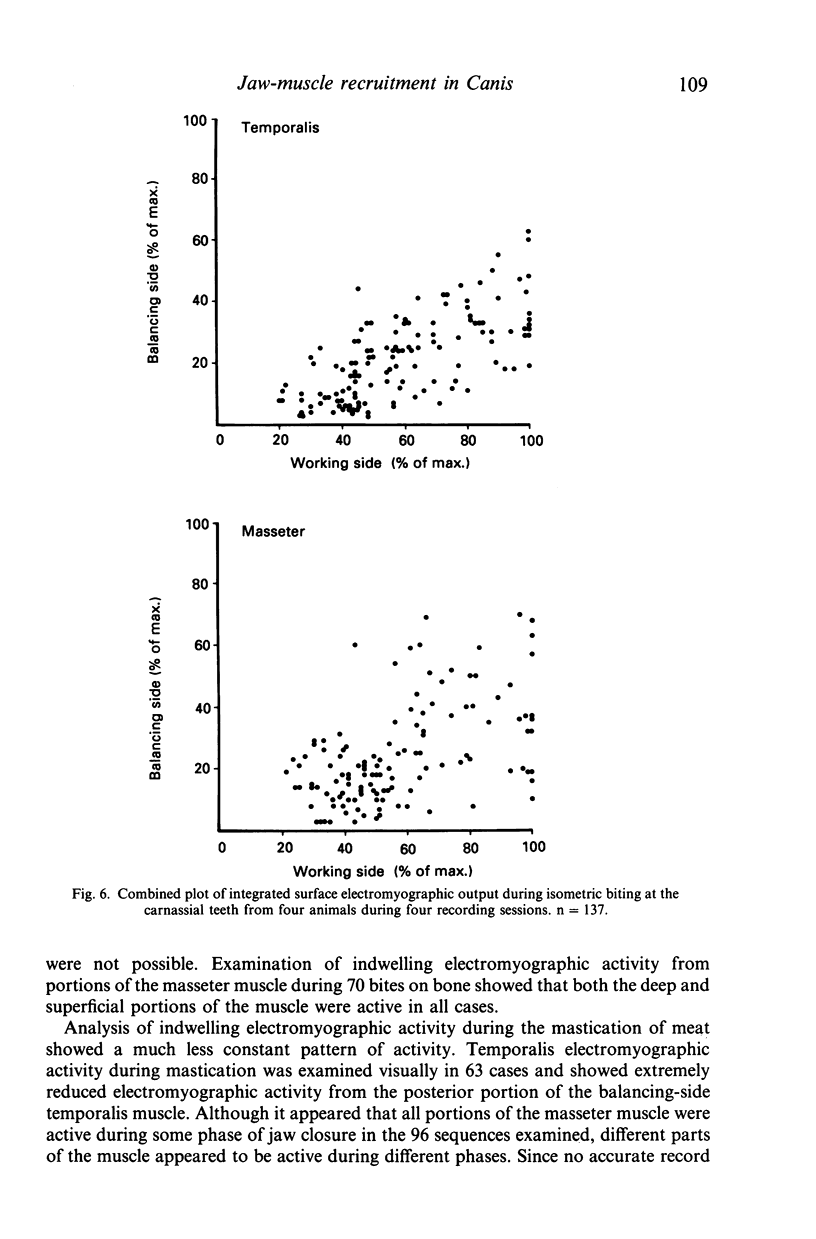
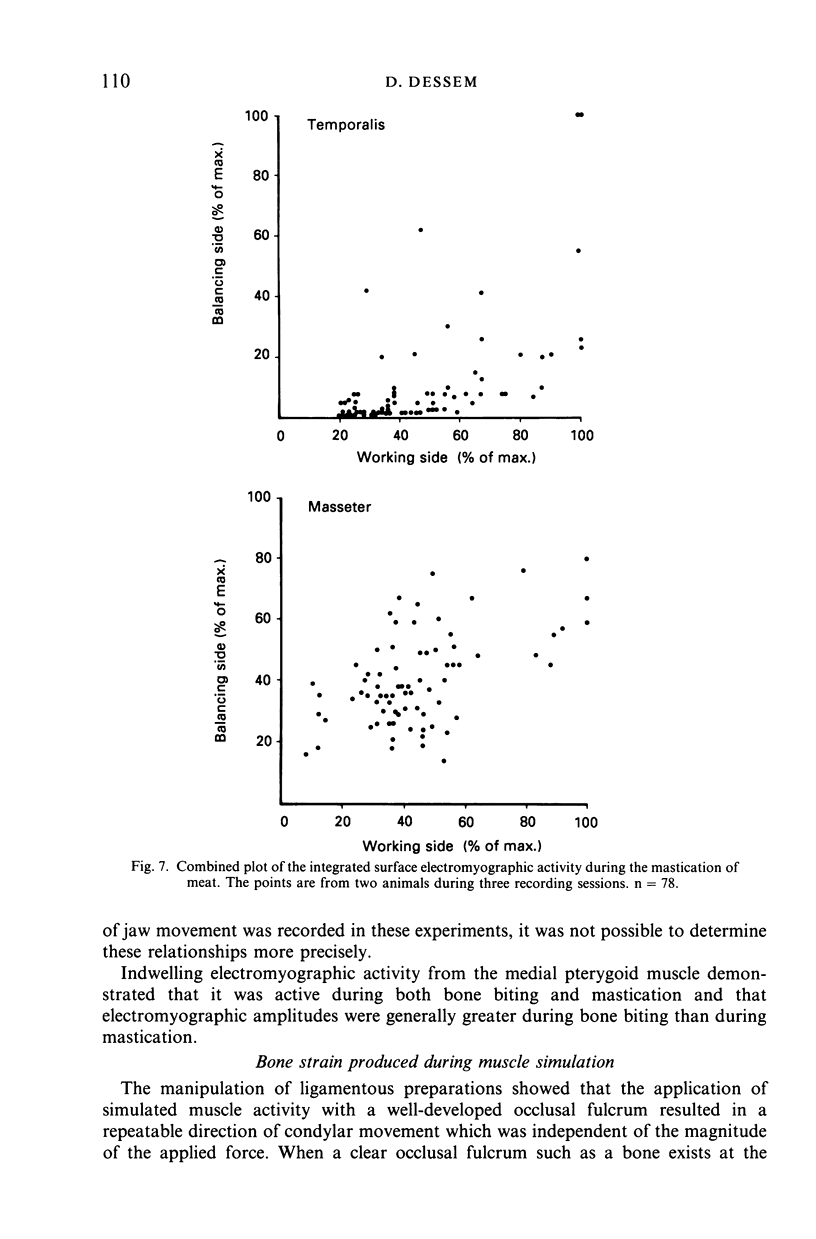
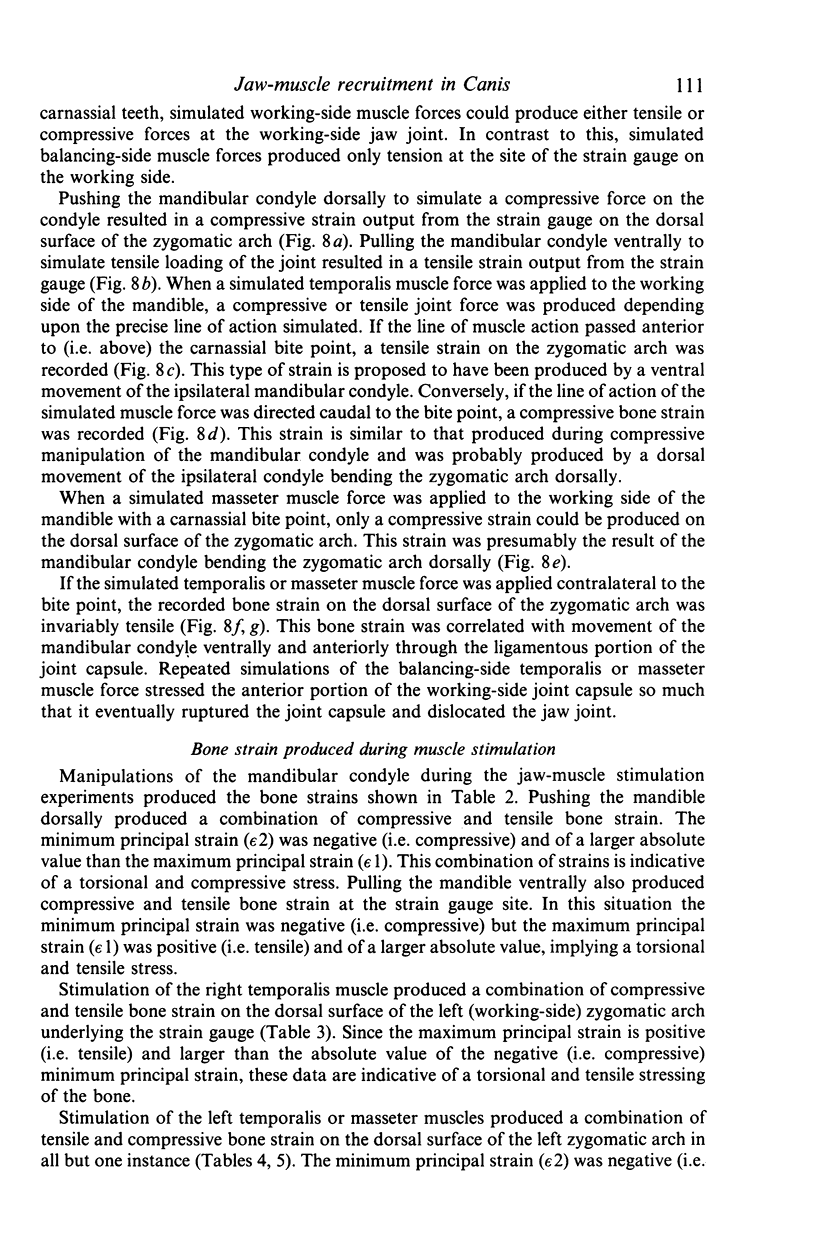
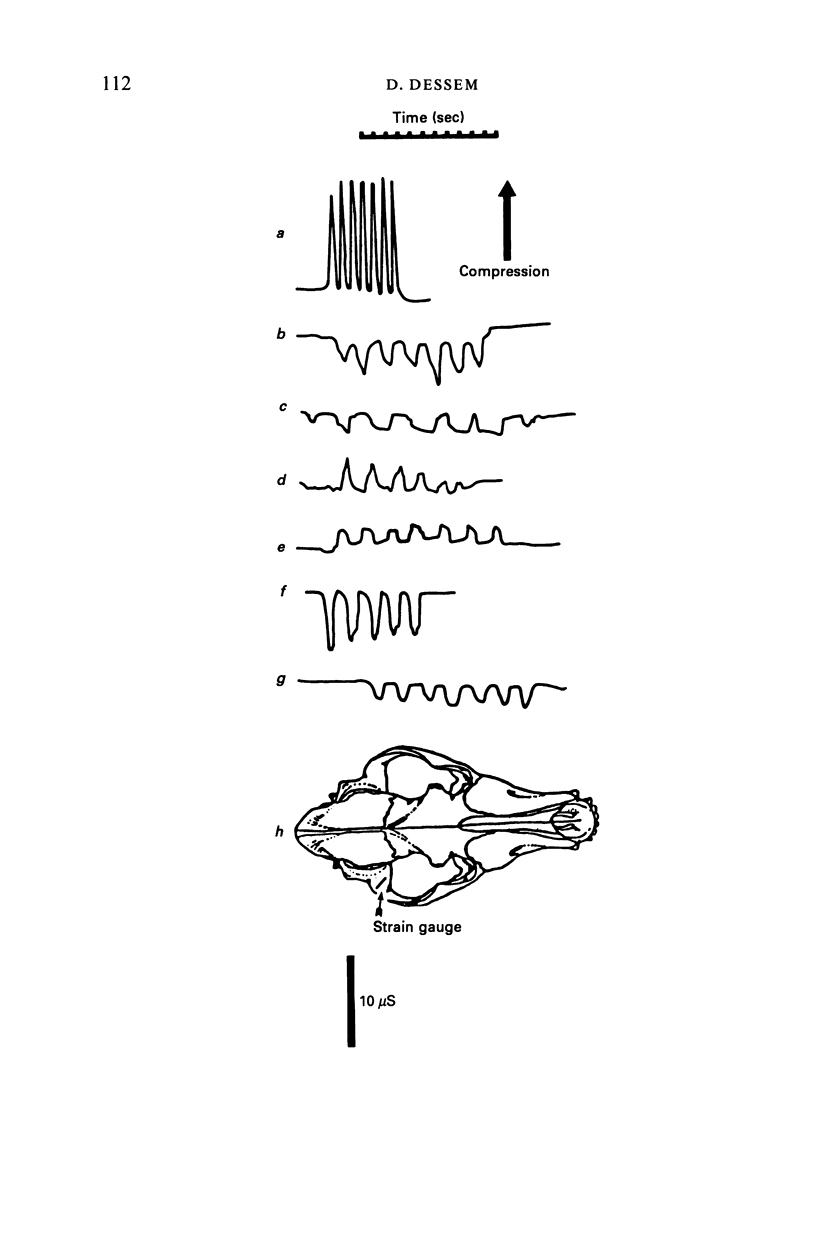
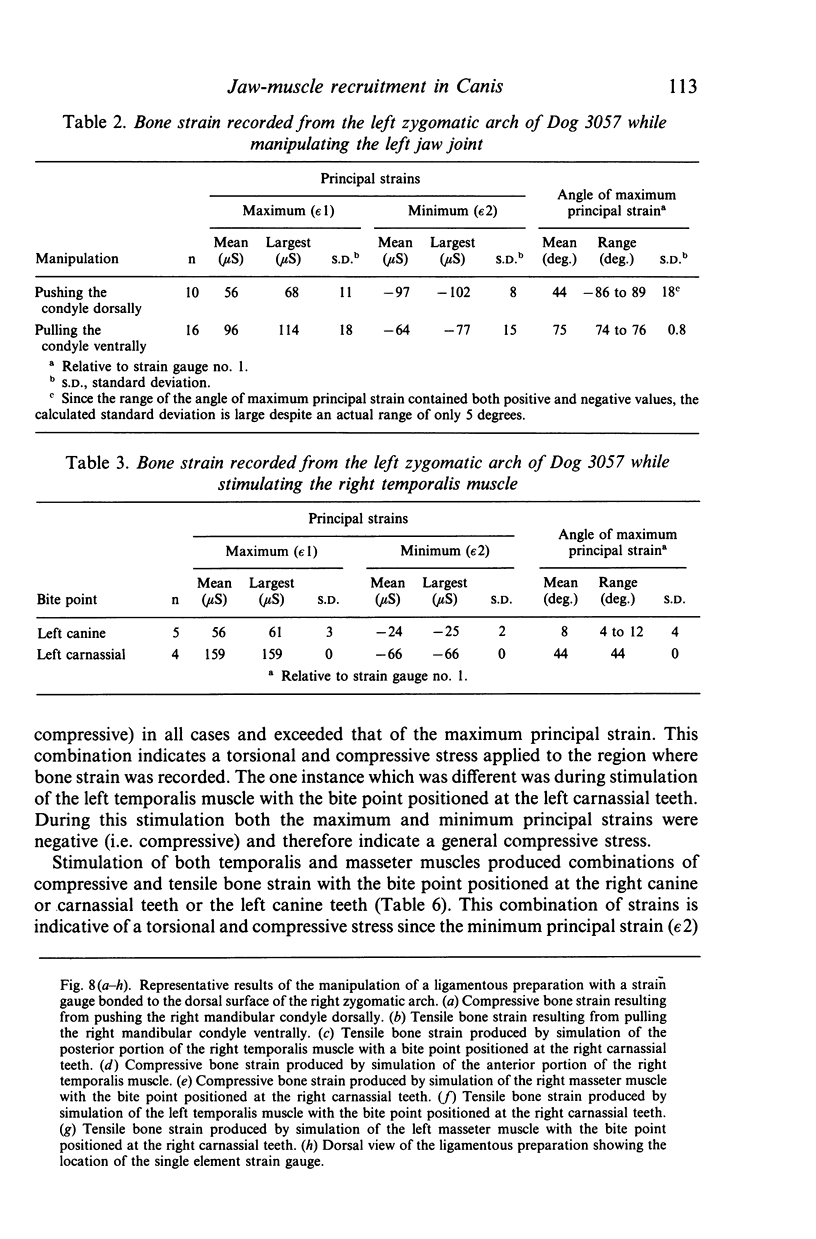
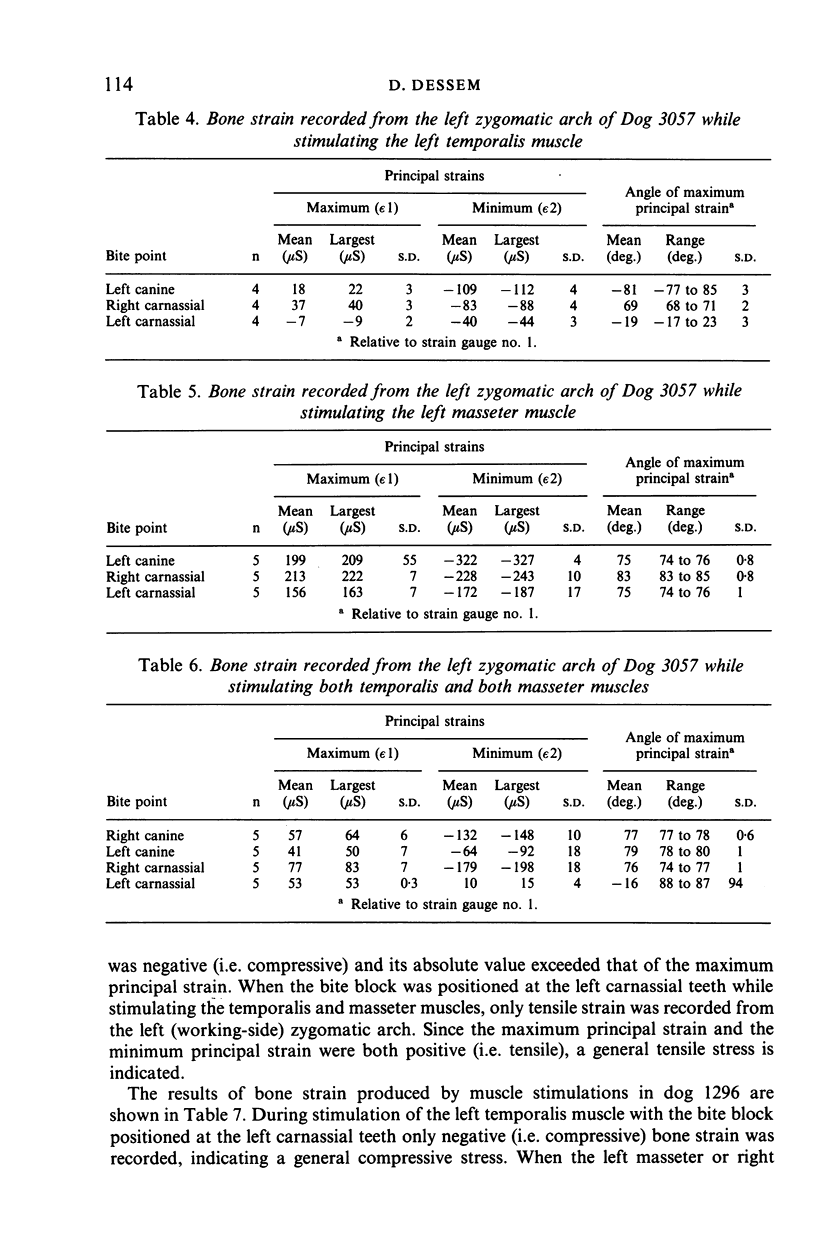
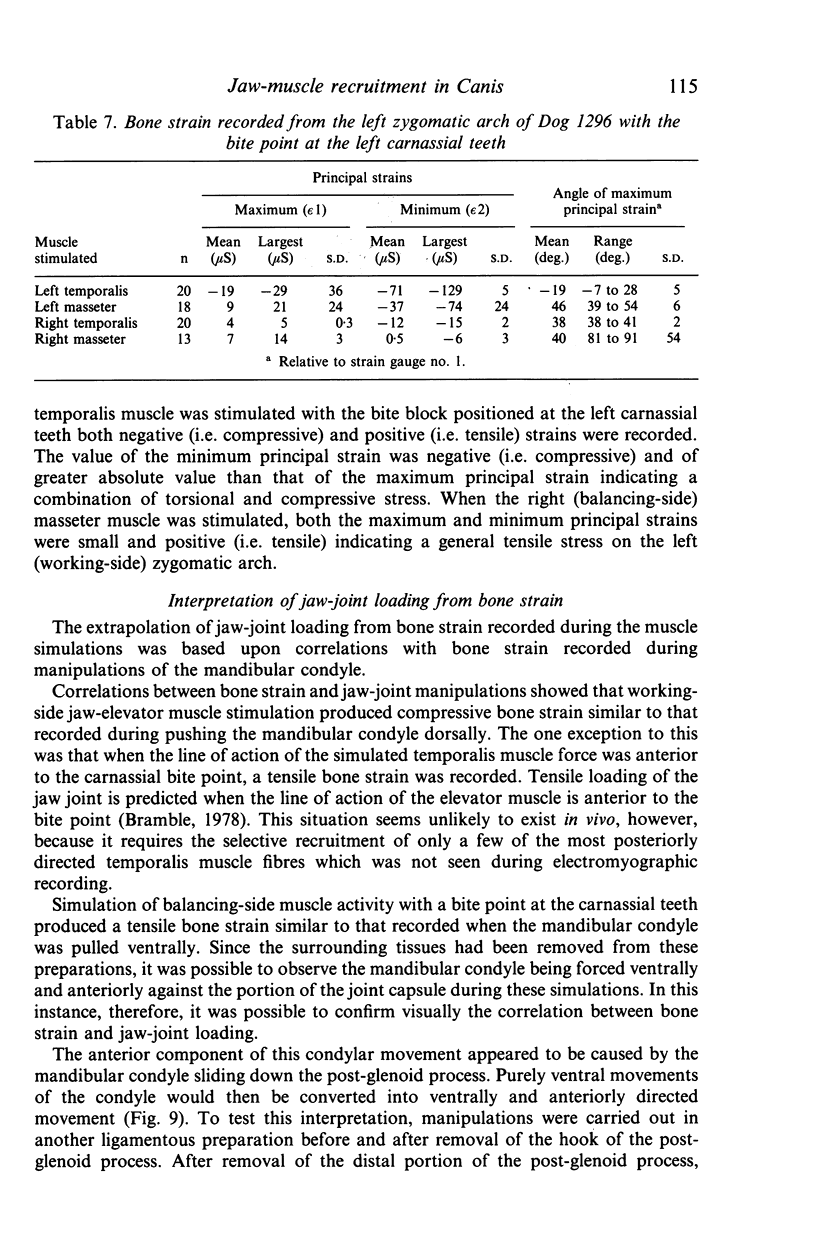
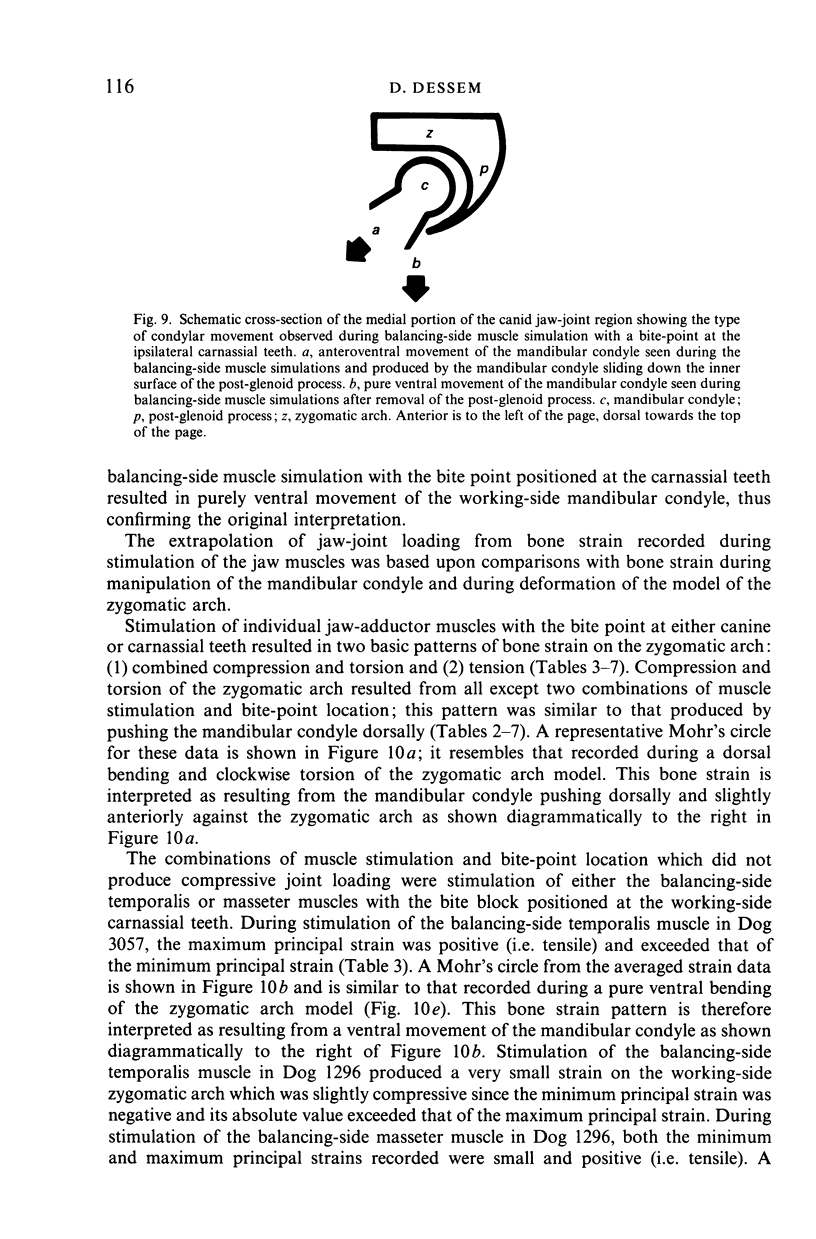
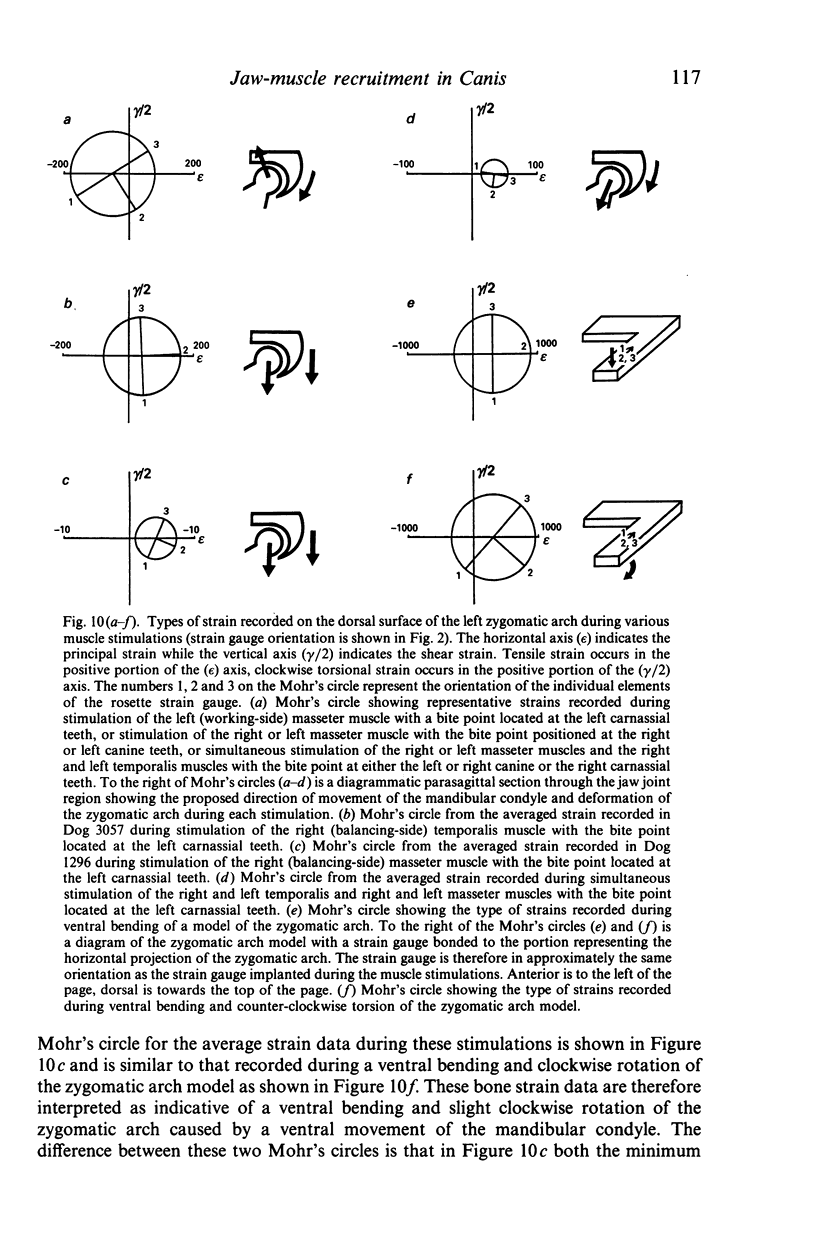
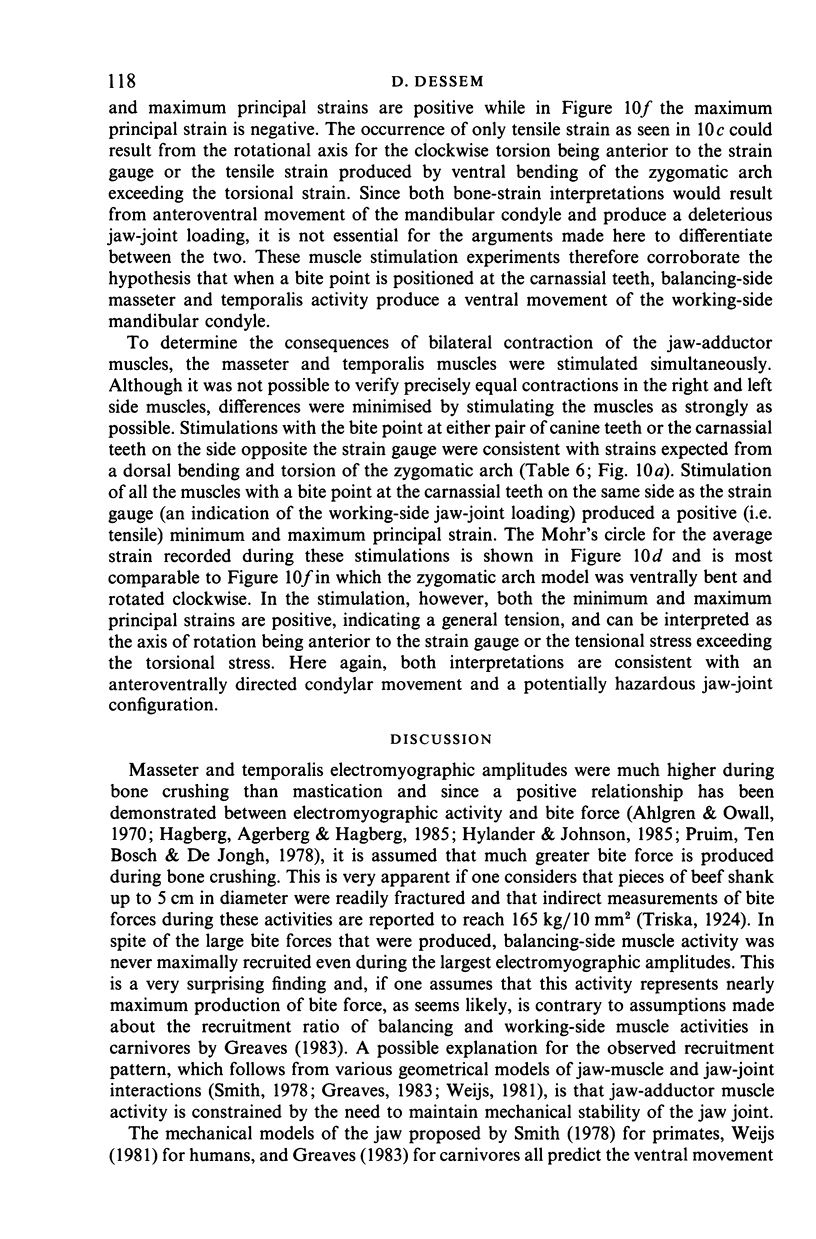
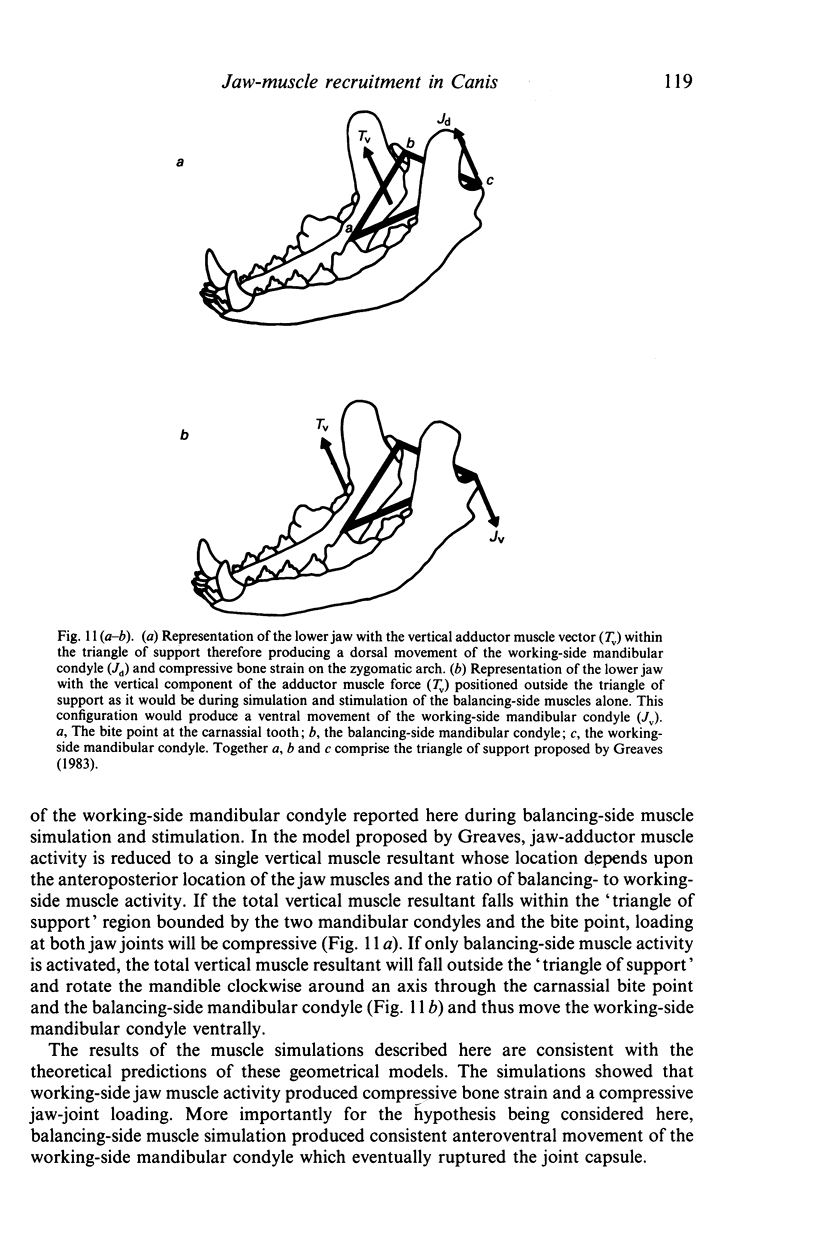
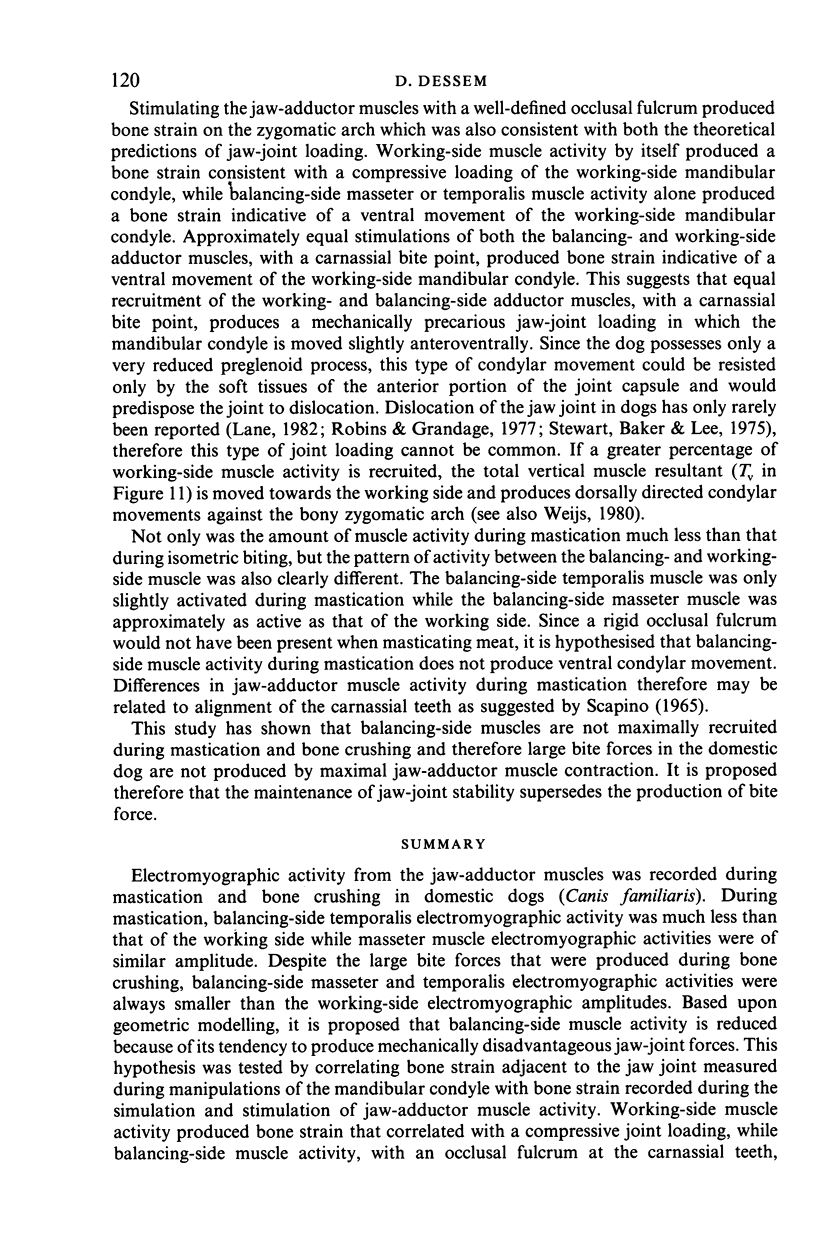
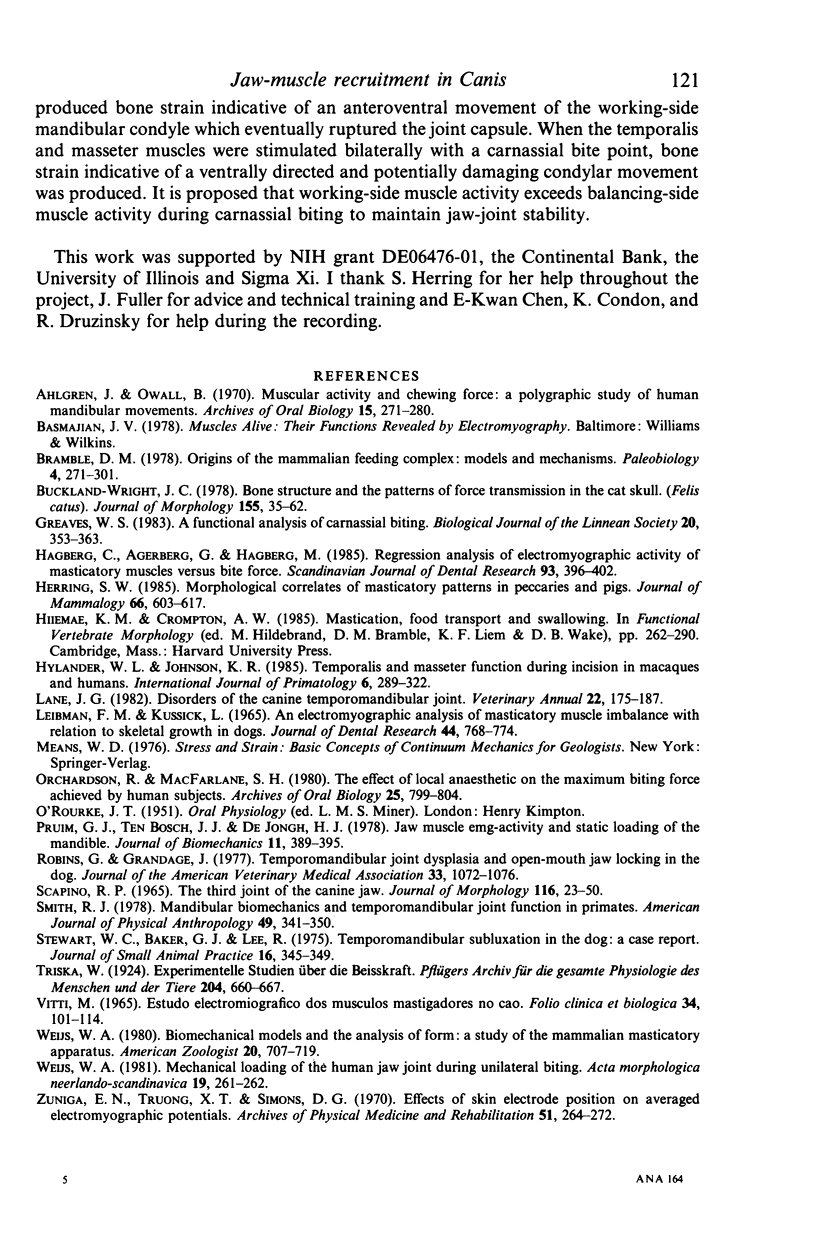
Selected References
These references are in PubMed. This may not be the complete list of references from this article.
- Ahlgren J., Owall B. Muscular activity and chewing force: a polygraphic study of human mandibular movements. Arch Oral Biol. 1970 Apr;15(4):271–280. doi: 10.1016/0003-9969(70)90053-1. [DOI] [PubMed] [Google Scholar]
- Buckland-Wright J. C. Bone structure and the patterns of force transmission in the cat skull (felis catus). J Morphol. 1978 Jan;155(1):35–61. doi: 10.1002/jmor.1051550104. [DOI] [PubMed] [Google Scholar]
- Hagberg C., Agerberg G., Hagberg M. Regression analysis of electromyographic activity of masticatory muscles versus bite force. Scand J Dent Res. 1985 Oct;93(5):396–402. doi: 10.1111/j.1600-0722.1985.tb01330.x. [DOI] [PubMed] [Google Scholar]
- LIEBMAN F. M., KUSSICK L. AN ELECTROMYOGRAPHIC ANALYSIS OF MASTICATORY MUSCLE IMBALANCE WITH RELATION TO SKELETAL GROWTH IN DOGS. J Dent Res. 1965 Jul-Aug;44:768–774. doi: 10.1177/00220345650440042401. [DOI] [PubMed] [Google Scholar]
- Orchardson R., MacFarlane S. H. The effect of local periodontal anaesthesia on the maximum biting force achieved by human subjects. Arch Oral Biol. 1980;25(11-12):799–804. doi: 10.1016/0003-9969(80)90137-5. [DOI] [PubMed] [Google Scholar]
- Pruim G. J., Ten Bosch J. J., de Jongh H. J. Jaw muscle EMG-activity and static loading of the mandible. J Biomech. 1978;11(8-9):389–395. doi: 10.1016/0021-9290(78)90073-8. [DOI] [PubMed] [Google Scholar]
- Robins G., Grandage J. Temporomandibular joint dysplasia and open-mouth jaw locking in the dog. J Am Vet Med Assoc. 1977 Nov 15;171(10):1072–1076. [PubMed] [Google Scholar]
- SCAPINO R. P. THE THIRD JOINT OF THE CANINE JAW. J Morphol. 1965 Jan;116:23–50. doi: 10.1002/jmor.1051160103. [DOI] [PubMed] [Google Scholar]
- Smith R. J. Mandibular biomechanics and temporomandibular joint function in primates. Am J Phys Anthropol. 1978 Sep;49(3):341–349. doi: 10.1002/ajpa.1330490307. [DOI] [PubMed] [Google Scholar]
- Stewart W. C., Baker G. J., Lee R. Temporomandibular subluxation in the dog: a case report. J Small Anim Pract. 1975 May;16(5):345–349. doi: 10.1111/j.1748-5827.1975.tb05752.x. [DOI] [PubMed] [Google Scholar]
- Zuniga E. N., Truong X. T., Simons D. G. Effects of skin electrode position on averaged electromyographic potentials. Arch Phys Med Rehabil. 1970 May;51(5):264–272. [PubMed] [Google Scholar]


